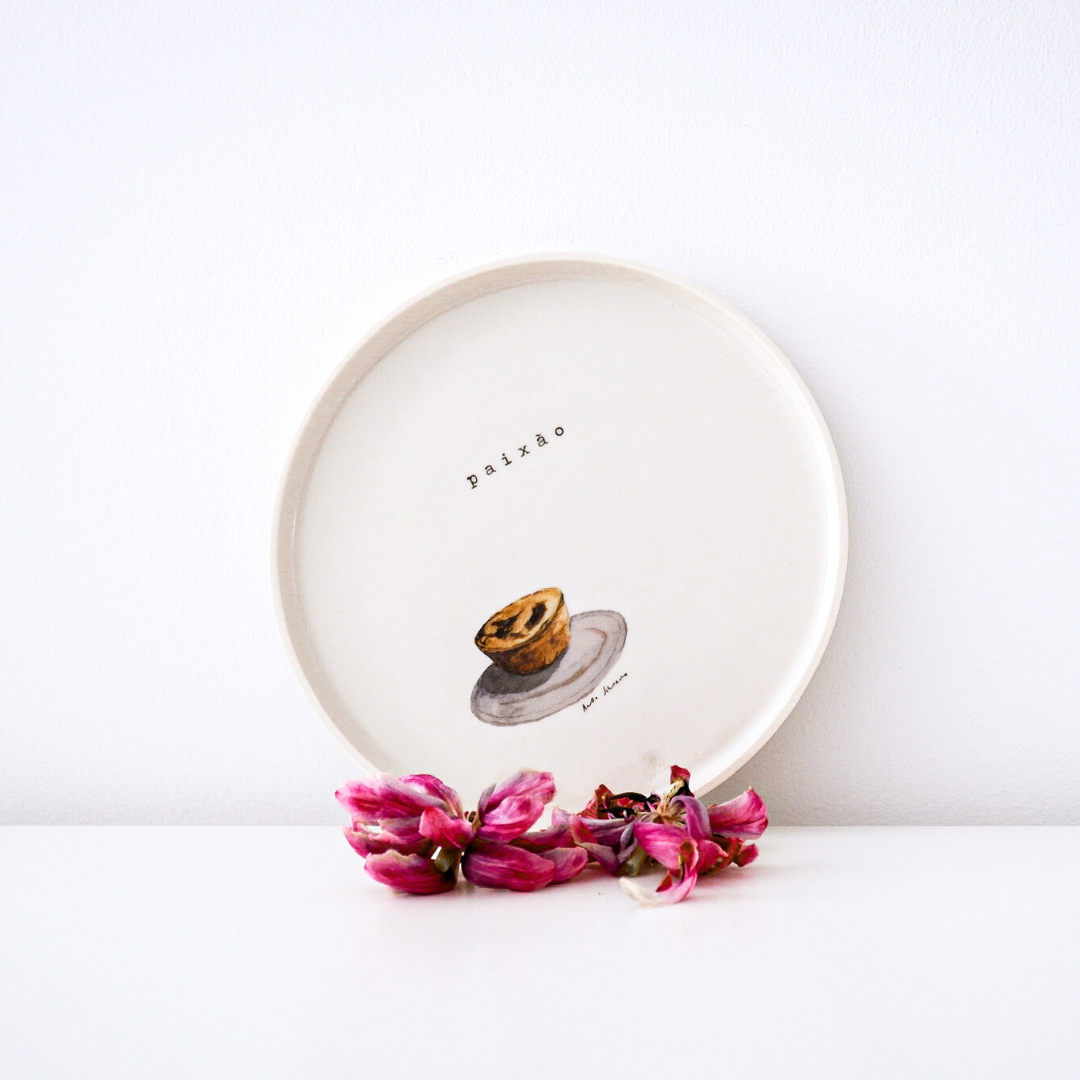From the iconic Pastéis de Belém to the intricate layers of Pastéis de Tentúgal and countless other delectable delights in between, the world of Portuguese pastries is a captivating tale of tradition, artistry and a sprinkle of sweet magic. With each bite you're transported to centuries-old monasteries, bustling bakeries and charming pastry shops, where time-honored recipes are lovingly passed down through the generations. Along the way, we'll uncover the secrets, stories, and unique characteristics that make each pastry a cherished piece of Portugal's cultural mosaic.

PHOTO BY MOINHO GLOBO
Pastéis de Belém, often referred to as "Pastéis de Nata," are among the most iconic and beloved Portuguese pastries. They have a rich history and are celebrated for their unique taste and cultural significance.
The history of Pastéis de Belém can be traced back to the early 19th century in Lisbon, Portugal. These delicious custard tarts are believed to have originated in the kitchens of the Jerónimos Monastery, located in the Belém district of Lisbon. As a result of the Liberal Revolution in 1820, many monasteries and convents were closed, and their residents, including the monks of Jerónimos Monastery, were expelled. Seeking to sustain themselves, the monks began selling pastries made from their surplus of egg yolks.

PHOTO BY PASTEL DE NATA AND FOR 91 DAYS IN LISBON
A Well-Kept Secret Recipe: In 1837, Alves opened a small bakery near the Jerónimos Monastery and began selling the pastries. These pastries quickly gained popularity due to their unique flavor and creamy texture. Alves maintained the original recipe as a closely guarded secret. To this day, only a select few at the Antiga Confeitaria de Belém bakery in Lisbon, which is housed in the original bakery established by Alves, know the complete recipe. This mystique surrounding the recipe adds to the allure of Pastéis de Belém.
Pastéis de Belém are characterized by their delicate, flaky puff pastry shells. The custard filling is creamy, slightly sweet, and possesses a hint of vanilla, while the top layer is gently caramelized, forming a beautifully browned surface. The tarts are typically sprinkled with a dusting of cinnamon and powdered sugar, which enhances the complexity of flavors. The contrast between the crispy, buttery pastry and the luscious custard filling is what truly sets these pastries apart.

PHOTO BY PASTÉIS DE BELÉM
Delightful Characteristics: Pastéis de Belém are characterized by their unique combination of textures and flavors. They feature a flaky, buttery puff pastry shell that is filled with a smooth, slightly sweet custard. The top of the custard is gently caramelized during baking, creating a beautifully browned and slightly crispy surface. A sprinkle of cinnamon and powdered sugar enhances the overall flavor and presentation of these pastries.

PHOTO BY PORTUGAL VISITOR, PASTEL DE NATA AND BROADSHEET
What Makes the Difference: The key to their exceptional taste lies in the closely guarded and unchanged recipe, known to only a handful of people who work at the bakery. The balance between the flaky, crispy crust and the creamy custard, together with the hint of cinnamon, is what sets Pastéis de Belém apart. These pastries are an embodiment of Lisbon's history and culture, with an unparalleled reputation for excellence that has endured for centuries.

PHOTO BY HAMISKY
Pastéis de Tentúgal, or "Pastéis de Tentúgal," are an exquisite Portuguese pastry that originates from the charming town of Tentúgal, located in the Coimbra district of Portugal. These pastries are an embodiment of traditional Portuguese pastry craftsmanship and have a unique history and flavor.
Pastéis de Tentúgal trace their origins to the Convent of Santa Clara, where nuns developed their exceptional pastry-making skills. These skilled nuns passed down their culinary expertise to a local artisan named Joaquim Graça, who later opened a pastry shop in Tentúgal in the early 20th century. It was here that the distinctive Pastéis de Tentúgal were born.

PHOTO BY MILLY'S KITCHEN AND TELECULINÁRIA
Exquisite Pastry Layers:
What sets Pastéis de Tentúgal apart from other Portuguese pastries is the meticulous preparation of the delicate, paper-thin layers of dough. These layers are skillfully folded into a rose-like shape, creating a visually stunning and intricate design. The pastry's thinness, often compared to fragile lace, results from an intricate process of rolling and folding. The layered pastry is then filled with a sweet and fragrant egg custard, creating a delectable contrast of textures.

PHOTO BY TERESA ACTIVA, FROM YOUTUBE
A layer of sugar syrup is drizzled over the pastries, giving them a glossy finish and an extra touch of sweetness. The sugar syrup also adds to the allure of Pastéis de Tentúgal, making them not only visually appealing but also a delightful treat for the taste buds.
Unique and Delightful Flavor: Pastéis de Tentúgal offer a distinct flavor profile. The ultra-thin, crispy pastry layers, when baked, create an airy, delicate texture that contrasts beautifully with the luscious egg custard filling. The pastry is subtly sweet, with a lovely custard aroma, and the sugar syrup adds a layer of sweetness without overwhelming the senses.

PHOTO BY PANELINHA DE SABORES AND TASTEATLAS
In summary, Pastéis de Tentúgal are a testament to the traditional craftsmanship of Portuguese pastry making, a delightful visual and culinary experience, and a representation of the enduring artistry of Tentúgal's pastry makers. Their unique combination of flavors and textures makes them a beloved treat in Portugal and beyond.

PHOTO BY MARCELO COPELLO
What Makes the Difference: What sets Pastéis de Tentúgal apart is the intricate and labor-intensive process of creating the ultra-thin pastry layers. The delicate layers, when baked, create a crispy and airy texture, contrasting beautifully with the luscious egg custard. The precision and patience required to make these pastries exemplify the dedication to traditional craftsmanship that makes Pastéis de Tentúgal a unique and beloved dessert. Each bite is a testament to the artistry and skill of the pastry makers in Tentúgal.
A UNIQUE RECIPE FOR EACH PASTRY...
Both Pastéis de Belém and Pastéis de Tentúgal exemplify the artistry and passion that go into Portuguese pastry-making. Whether you prefer the classic, guarded secret recipe of Pastéis de Belém or the delicate layers of Pastéis de Tentúgal, both pastries are a testament to the rich culinary heritage of Portugal and continue to captivate the taste buds of locals and visitors alike.
PASTEL AND PASSION — A THIN LINE BETWEEN ART AND CULTURE
Discover our limited edition of 4 porcelain illustrated plates.
Among these treasures, let yourself be enchanted by our Paixão, Passion plate, a true declaration of love for the rich Portuguese culture. That delightful custard tart is more than just a treat, it's a genuine Passion. Every bite is infused with history, traditions and love for Portuguese cuisine.
PHOTO BY LUZ EDITIONS, FROM THE COLLECTION PLATE
It's a piece of art that celebrates Portugal's passion for gastronomy and culture. It invites you to savor the past, present, and future of this enchanting country with every meal. Add this porcelain plate to your collection, and every meal will become a celebration of Portuguese passion.
PHOTO BY LUZ EDITIONS, FROM THE COLLECTION PLATE
Get them our plates here.



